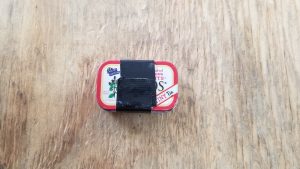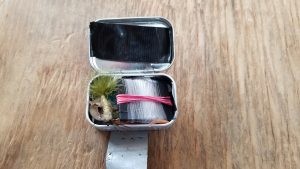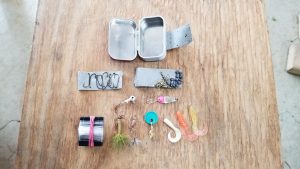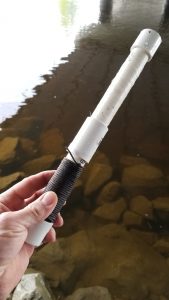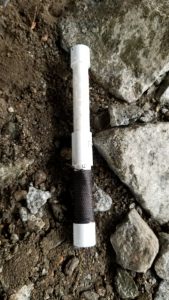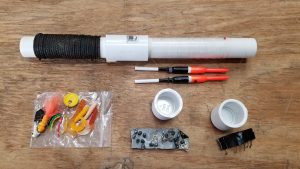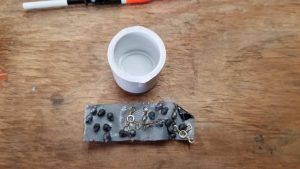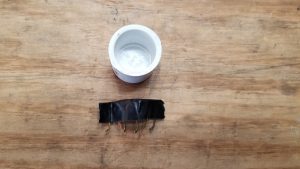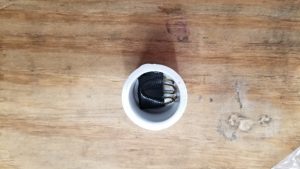When it comes to acquiring calories in a survival situation it is hard to beat fishing for calories gained versus calories expended. This is why I like to have a small survival fishing kit tucked away in my possibles pouch and another larger one that I can slip into whatever pack I happen to be running that day. These kits are very easy to build and if you are an angler you’ll have all the bits and pieces in your tackle box already.
SKIP AHEAD
Where to Start?
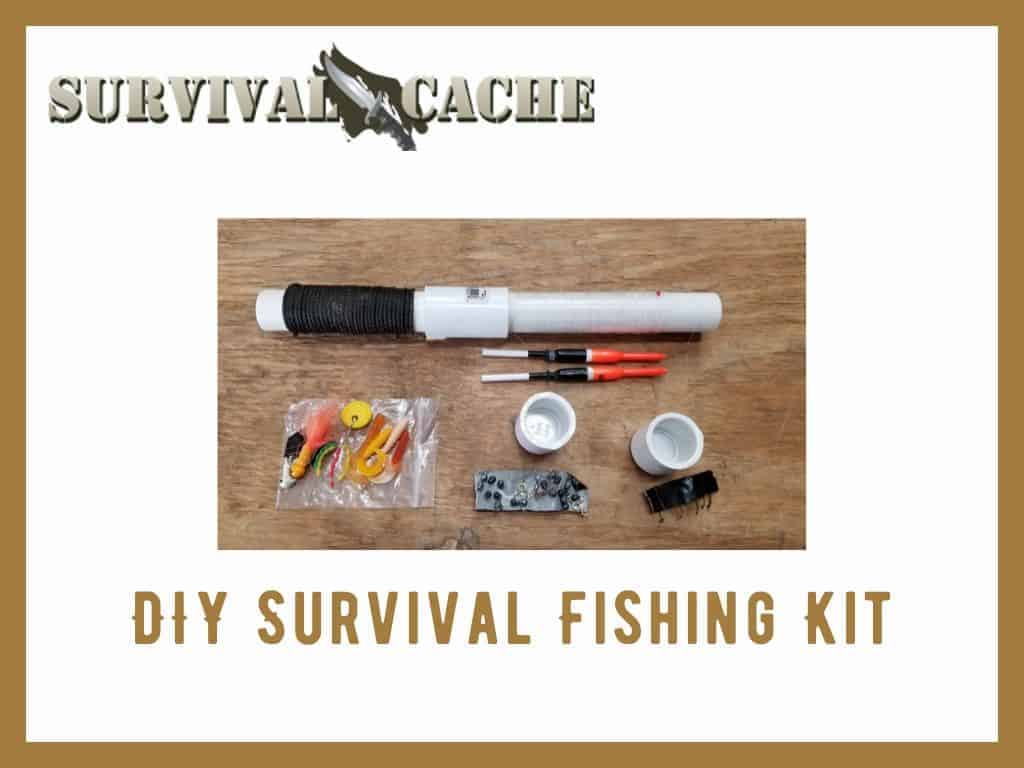
First step is to determine what is the most likely species of fish you would expect to catch in your area, and what type of techniques and tackle would be most appropriate for catching those fish. Then put together your kit with the gear that you use and know to work.
Components in a Survival Fishing Kit
No matter what fish you expect to haul in there are several universal components that will make up any survival fishing kits.
Line
Normally I like to run ultralight fishing line, but not in my survival fishing kits. I usually have a minimum of 10 pound test monofilament line in either of my kits. As far as how much to include I like to include as much as I can without it becoming burdensome. Having some bank line on hand too is very useful for setting up trotlines and the such.
You can store the fishing line compactly in a yoyo reel. The yoyo reel not only can store your line, but can be used to fish.
Hooks
These kits are not where you want to have any barbless hooks. That being said here in beautiful British Columbia there are many spots that barbless hooks must be used so I include a couple in case I want to use the kit in a non-survival situation, and still being in compliance with the regulations. The size and type of hooks should be on the smaller side so you can easily hook both small and larger fish. Treble hooks are also a great addition since you get three hooks in one and maximize your ability to hang on to the fish while bringing it in. I add in some jigs too that increase the versatility of my setup.
Weights
I always have a bit of spit shot in either of my kits. These weights help drag your bait or lure down to where the fish are. I like to use the standard reusable lead spit shot that I am certain we are all familiar with.
Swivels
These will help to make switching between different gear rigs easier and will help prevent twisting in the line. I like to add in a couple of three way swivels so I could set up dual hooks if need be.
Floats
My small kit lacks room for floats but I do include a couple in my larger kit. From slip floats to the iconic red and white bobber, a float is a good addition to any fishing kit. Not only do they tell us where our bait is and act as a strike indicator, but they also help to keep our bait suspended the correct distance off the bottom. These can easily be improvised out in the field though.
Lures and plastic baits
Since I’m probably going to have the best luck fishing for trout I include some lures that I’ve actually caught trout on. A survival situation requires tried and true equipment so make sure whatever you put in your kit actually will catch fish. I’ll throw in some plastic baits as well mainly because they go well with the jigs hooks that I put in. I do not have a lure in my PVC pipe kit because the action of winding the line back on the pipe does not give the action I like out of my lures. Using a lure on a rig like this may work for you though.
Methods of Fishing
Improvised Fishing Pole
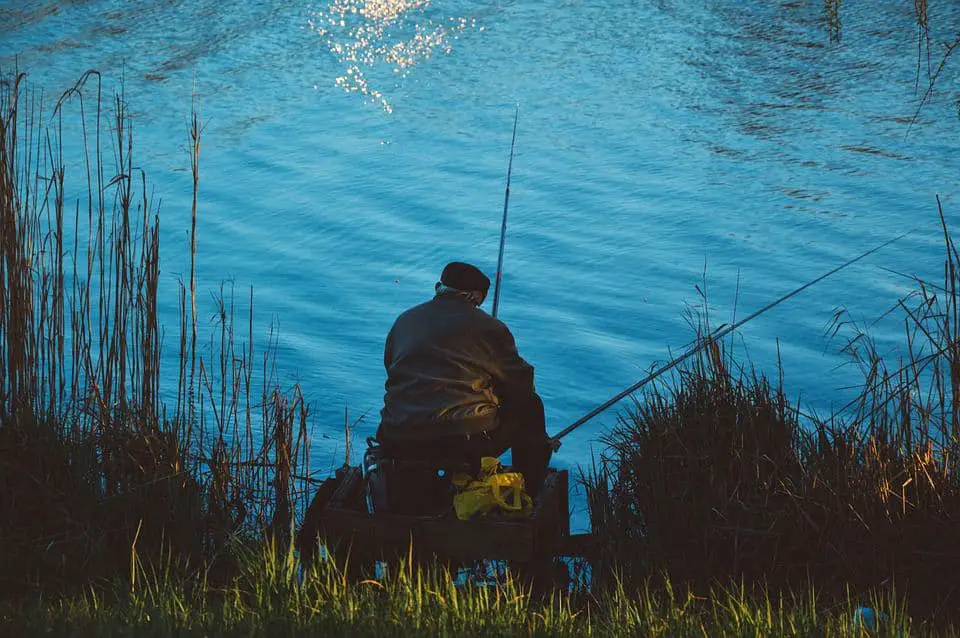
The first and most obvious method is to use a long stick as a fishing pole. This is a good option if you can find an appropriate stick but an important point to note is to not tie off a length of fishing line at the end of the pole. Instead do not cut your line at all, but run out the length you want and secure to the end of the pole with a clove hitch. Hold the remainder of the line in your hand. This way if the improvised rod breaks you still have a hand on your line and your fish.
Hand Line
This is as simple as it sounds throw your line out and pull it in by hand. This can work pretty good with jigs and, if you’re fishing in some current, lures too. It can take a little practice to get the out to where you want it but after awhile it becomes pretty intuitive like throwing a rock. You need to police your line very diligently to avoid the dreaded bird nesting horrors that all anglers inevitably face.
Improvised Reel/Spool
This is the reason I have a PVC pipe fishing kit. The pipe acts as a reel/spool for the line which keeps it nice, neat, and very cast-able. This can also be made out of wood using branches or stick you find laying around the woods. A plastic water bottle works well too.
Trotlines/Twitch up Snare
A trotline is a line strung out across the water which is anchored and other lines are tied in so they dangle baited hooks at varying depths. This allows you to set it and walk away to do something else.
A twitch up snare is a branch under tension that the line is attached to and run through a trigger and then out into the water with baited hook. When the fish takes the bait the snare is triggered and the branch twitches up, setting the hook.
My Survival Fishing Kits
I have two survival fishing kits that I carry, one is contained within a mini Altoids tin and the other I made out of PVC pipe and can be used as a crude fishing reel.
Mini Altoids Tin Kit
The contents include:
- Roll of 30 metres or so of 10 pound test monofilament
- 8 Barbed hooks
- 3 Dry flies
- 1 Jig
- 1 Lure
- 3 Plastic baits
- Float stoppers
- Assorted weights and swivels
I like to tape the weights and swivels to the bottom of the tin and tape the hooks to the lid of the tin. This keeps them more organized and stops them from rattling around the tin. I also tape the tin shut so it does not inadvertently open up inside my possibles pouch.
PVC Pipe Fishing Kit
The materials to make this kit include:
- 11” of 3/4” PVC Pipe
- 2 pcs 3/4” PVC End Caps
- 1 pcs 3/4” PVC Straight Coupler
To build this, follow these steps:
- Cut two pieces of 3/4” PVC pipe. One at 6 inches and one at 5 inches.
- Connect them together by way of the coupler.
- The six inch section is going to hold the fishing line so drill a small hole through which line will be fed through. The line is secured inside the pipe by attaching a float stopper on the inside. Position this hole close to the coupling.
- On the other end of the six inch section, cut a slot with a hacksaw that the loose end of the line will slide easily through to help with storage.
- Wrapped the shorter section of pipe with a length of bankline this becomes the handle.
- Cap both ends with end caps to keep the contents secure inside.
You can add the following pieces of gear into this PVC fishing kit:
- Monofilament line wrapped around 6 inch pipe
- #36 Bankline wrapped around handle portion
- 6 hooks
- 2 Slip floats
- 2 Jigs
- 4 Plastic baits
- Assorted Spit shot and swivels
- Float stoppers
I like to tape the hooks inside one end cap and the weights and the swivels inside the other end cap. The rest of the contents slip into the PVC pipe inside of a plastic bag. I keep the line rigged with a float and a hook which I secure inside the pipe by slipping the line into the slot I cut. This prevents the spool of fishing line from un-spooling.
This is how you can use the kit:
- Remove the end caps and take the contents of the kit out, securing them in a pocket. I’ll replace the handle end cap to help prevent the pipe from sliding through my hand while casting.
- Rig up line with hook, sinker, float, and bait, and let dangle from the end of the pipe.
- To cast I either use the leverage of my pipe fishing kit contraption to cast the line out which should un-spool off the pipe nicely, or I throw it out with one hand while holding the pipe in the other.
- To retrieve the line takes a minute or so of practice, the goal is to re-spool the line back on the pipe by either winding the line back around with one hand or spinning the pipe to re-spool the line, or a combination of both. I find that this motion is not conducive to the use of lures which is why I do not include one in this particular kit.
Final Thoughts
Either of these survival fishing kits does the job but each one has a place.
I like the small kit as a last-ditch survival kit whereas I like the PVC version to be in my day pack in case I want to do a little fishing while on the trail. You can make these kits as simple or as elaborate as you wish and they are infinitely customization, best yet, if you already do a lot of fishing you these kits probably cost you nothing.


